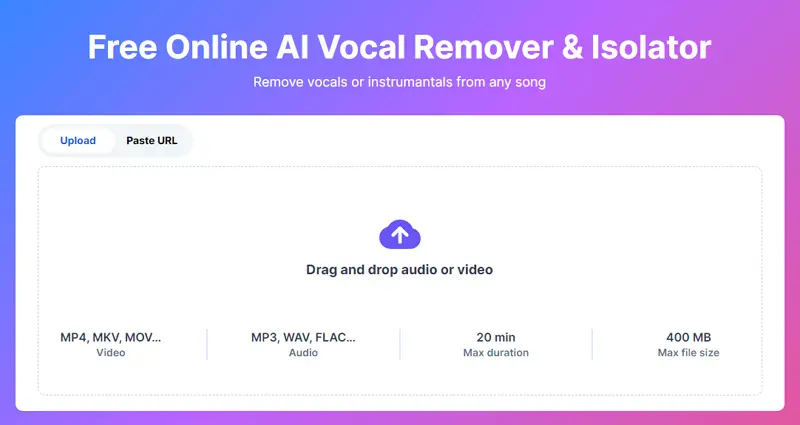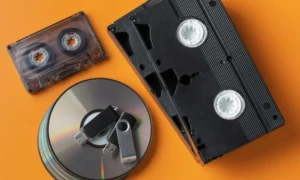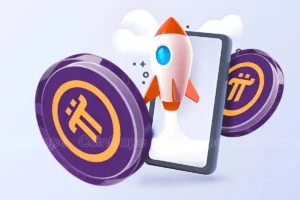The Future of Music Editing: AI Vocal Remover and Its Impact on the Industry

Introduction to the Evolution of Music Editing
The music industry has undergone a series of technological revolutions—from analog tape editing to digital workstations and now artificial intelligence. One of the most groundbreaking innovations recently has been the AI vocal remover, a tool designed to isolate or eliminate vocal tracks from any music recording. This technology is not just a fancy plugin for audio engineers; it’s a game-changer that is reshaping how artists, producers, DJs, and content creators interact with music.
What is an AI Vocal Remover?
An AI vocal remover uses machine learning and advanced signal processing algorithms to separate vocals from instrumentals in audio tracks. Traditional methods relied on phase inversion or EQ isolation techniques, which often produced distorted or incomplete results. In contrast, AI-powered tools learn from thousands of audio samples to predict and subtract vocal frequencies with remarkable precision. The result is a clean instrumental version of a song or, conversely, an isolated vocal track that can be used for remixes, karaoke, sampling, or educational purposes.
The Rise in Popularity and Accessibility
The rise of online platforms and accessible audio software has made AI vocal remover tools more available than ever. Previously, only high-end studios could afford complex software suites or hardware setups for vocal isolation. Today, even bedroom producers can visit a website or download an app to remove vocals from songs in seconds. This democratization of music editing is fueling creativity at all levels—from amateurs experimenting with mashups to professionals crafting high-quality remixes.
Use Cases Across the Music Industry
AI vocal remover tools are being used across various domains in the music world. DJs and remix artists benefit by creating instrumentals for live sets without needing official acapella versions. Music educators use vocal isolation to analyze pitch, tone, and delivery, helping students study performances in detail. Filmmakers and content creators often require background music without vocals, and AI tools offer a quick solution without legal or licensing hurdles. Karaoke enthusiasts also rely on these tools to create high-quality backing tracks for home or public performances.
Advantages Over Traditional Methods
One of the main reasons the AI vocal remover has gained such traction is its superior performance compared to traditional techniques. Manual methods like EQ adjustments or mid-side processing often leave artifacts and can’t cleanly remove vocals from complex mixes. AI tools, on the other hand, adaptively learn the unique fingerprint of human vocals and remove them while preserving the instrumental components. This precision translates to cleaner edits, better remixes, and more professional outputs.
Challenges and Limitations
Despite their advantages, AI vocal removers are not without limitations. They still struggle with tracks where vocals are heavily blended with instruments or where multiple vocal layers are present. Occasionally, artifacts or distortions can occur, especially in older or low-quality recordings. Additionally, the ethical use of such tools is a growing concern—removing vocals and using them without permission can breach copyright laws. As the technology becomes more widespread, the industry will need to address these challenges with updated policies and best practices.
Impact on Music Production and Remix Culture
AI vocal remover technology has accelerated the growth of remix culture. Artists are now empowered to create new versions of popular songs without needing access to studio stems or licensed acapella tracks. This fosters creativity and can even help unsigned artists gain exposure by releasing innovative covers or remixes. Moreover, it offers new opportunities for collaboration—producers can build beats around isolated vocals, while vocalists can overlay harmonies on clean instrumentals.
Implications for Intellectual Property and Copyright
The ability to isolate vocals from any commercial track introduces new complexities in copyright enforcement. While AI vocal remover tools are legal in themselves, using extracted vocals or instrumentals in commercial projects without proper licensing can violate intellectual property rights. This has led to increased discussions about fair use, sampling, and the responsibilities of creators using AI-powered tools. Moving forward, platforms and developers may integrate watermarking or licensing systems to ensure fair and ethical usage.
AI Integration in DAWs and Streaming Services
Major digital audio workstations (DAWs) and streaming platforms are beginning to integrate AI vocal remover features directly into their ecosystems. This makes it easier for creators to access advanced editing tools without additional software. For example, some DAWs now offer real-time vocal separation, while streaming services experiment with user-controlled mix adjustments, letting listeners turn vocals on or off. These integrations suggest a future where AI-powered customization becomes standard in both professional and consumer-level music experiences.
How It’s Changing the Role of Audio Engineers
Traditionally, tasks like vocal removal required specialized knowledge and hours of manual editing. With AI vocal remover technology, much of that labor-intensive work is automated. This shifts the role of audio engineers from technical operators to creative overseers. Engineers now spend less time on tedious edits and more time on refining mix quality, creative processing, and sound design. The time saved allows for faster turnarounds and more experimental projects, pushing the boundaries of what’s possible in modern music production.
Future Developments and Predictions
The future of AI vocal remover tools looks even more advanced and integrated. Upcoming models are expected to achieve near-perfect separation, even in complex mixes with overlapping frequencies. Developers are also working on tools that can isolate specific instruments or even distinguish between background vocals and lead vocals. As AI evolves, we may soon see real-time, high-fidelity vocal removal in live performances or streaming environments, opening up new creative possibilities for artists and audiences alike.
A Tool, Not a Replacement
Despite its capabilities, the AI vocal remover should be seen as a tool rather than a replacement for musicians or engineers. Human creativity, judgment, and artistic expression remain irreplaceable. AI can assist and enhance the music-making process, but the soul of music—emotion, storytelling, connection—still depends on the artist. Used responsibly, AI tools like vocal removers can inspire new directions while preserving the authenticity of musical expression.
Conclusion
The introduction and advancement of the AI vocal remover marks a pivotal moment in the evolution of music editing. It offers unprecedented control and flexibility, empowering creators across all levels of the industry. From simplifying the remixing process to enabling educational insights and shaping how we interact with music, its impact is profound and far-reaching. While challenges around ethics and copyright remain, the potential for innovation and collaboration continues to grow. As AI technology matures, the music industry must embrace these tools wisely to unlock new creative frontiers.






